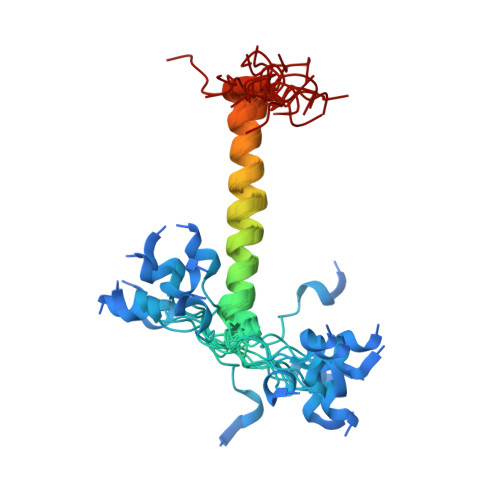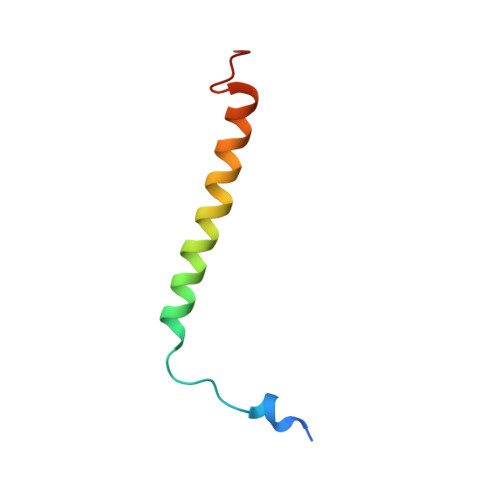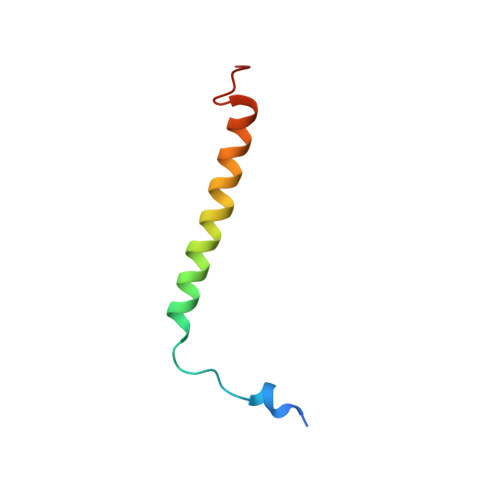gamma-Secretase cleavage of the Alzheimer risk factor TREM2 is determined by its intrinsic structural dynamics.
Steiner, A., Schlepckow, K., Brunner, B., Steiner, H., Haass, C., Hagn, F.(2020) EMBO J : e104247-e104247
- PubMed: 32830336
- DOI: https://doi.org/10.15252/embj.2019104247
- Primary Citation of Related Structures:
6Z0G, 6Z0H, 6Z0I - PubMed Abstract:
Sequence variants of the microglial expressed TREM2 (triggering receptor expressed on myeloid cells 2) are a major risk factor for late onset Alzheimer's disease. TREM2 requires a stable interaction with DAP12 in the membrane to initiate signaling, which is terminated by TREM2 ectodomain shedding and subsequent intramembrane cleavage by γ-secretase. To understand the structural basis for the specificity of the intramembrane cleavage event, we determined the solution structure of the TREM2 transmembrane helix (TMH). Caused by the presence of a charged amino acid in the membrane region, the TREM2-TMH adopts a kinked structure with increased flexibility. Charge removal leads to TMH stabilization and reduced dynamics, similar to its structure in complex with DAP12. Strikingly, these dynamical features match with the site of the initial γ-secretase cleavage event. These data suggest an unprecedented cleavage mechanism by γ-secretase where flexible TMH regions act as key determinants of substrate cleavage specificity.
Organizational Affiliation:
Bavarian NMR Center at the Department of Chemistry and Institute for Advanced Study, Technical University of Munich, Garching, Germany.
















